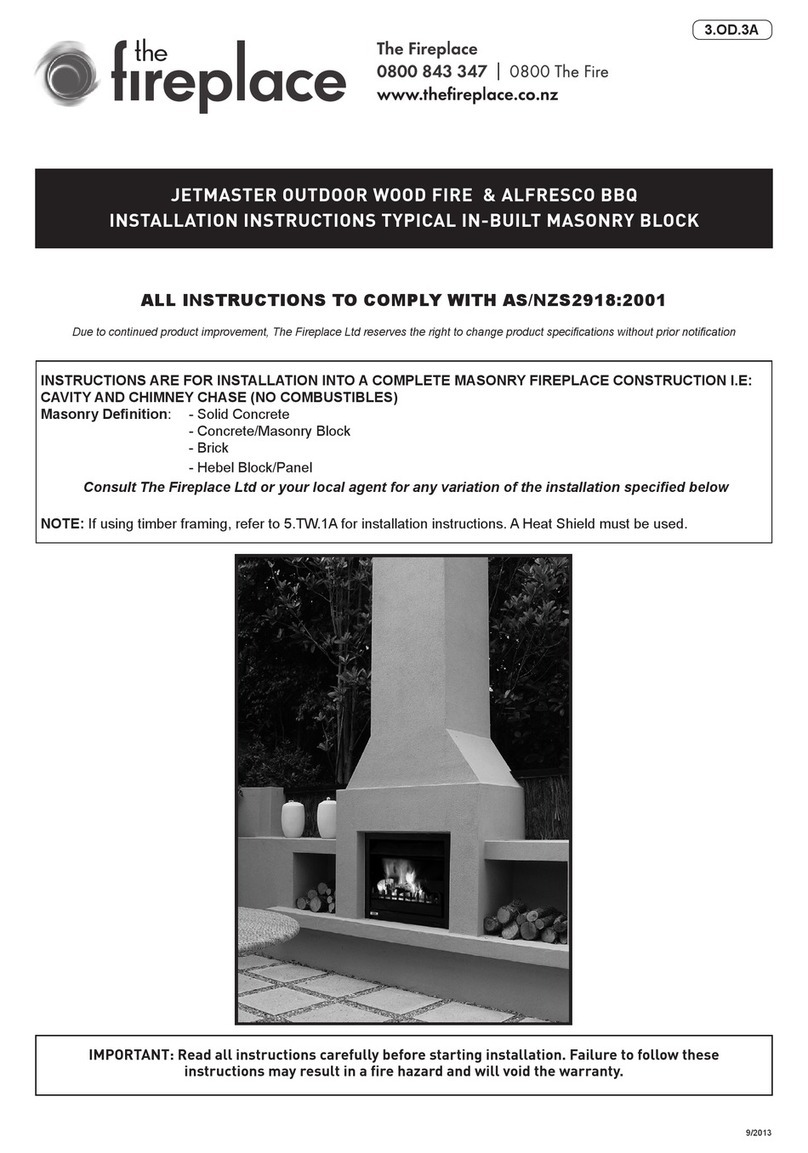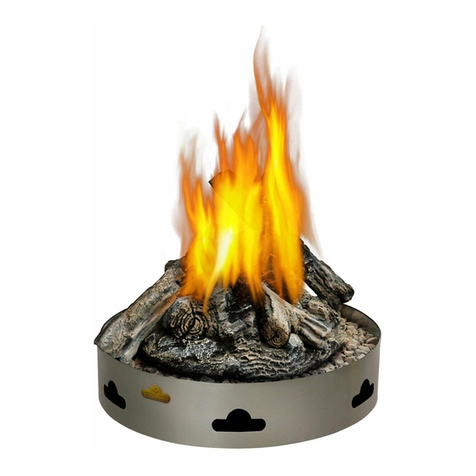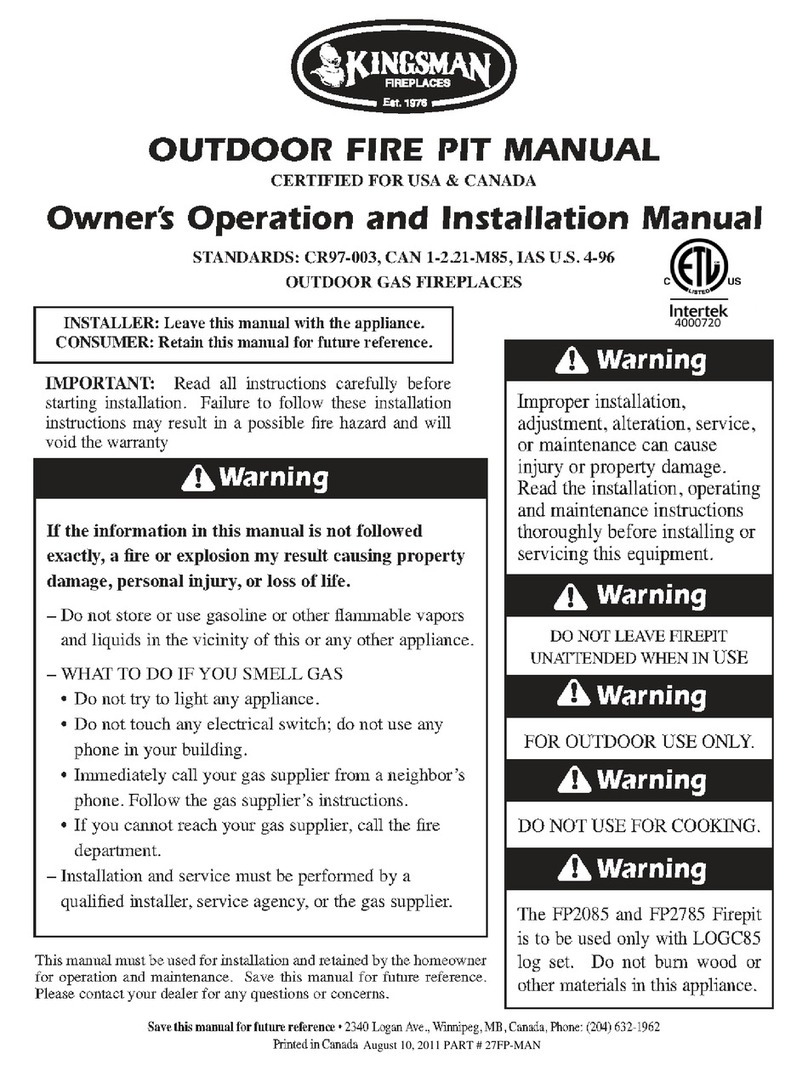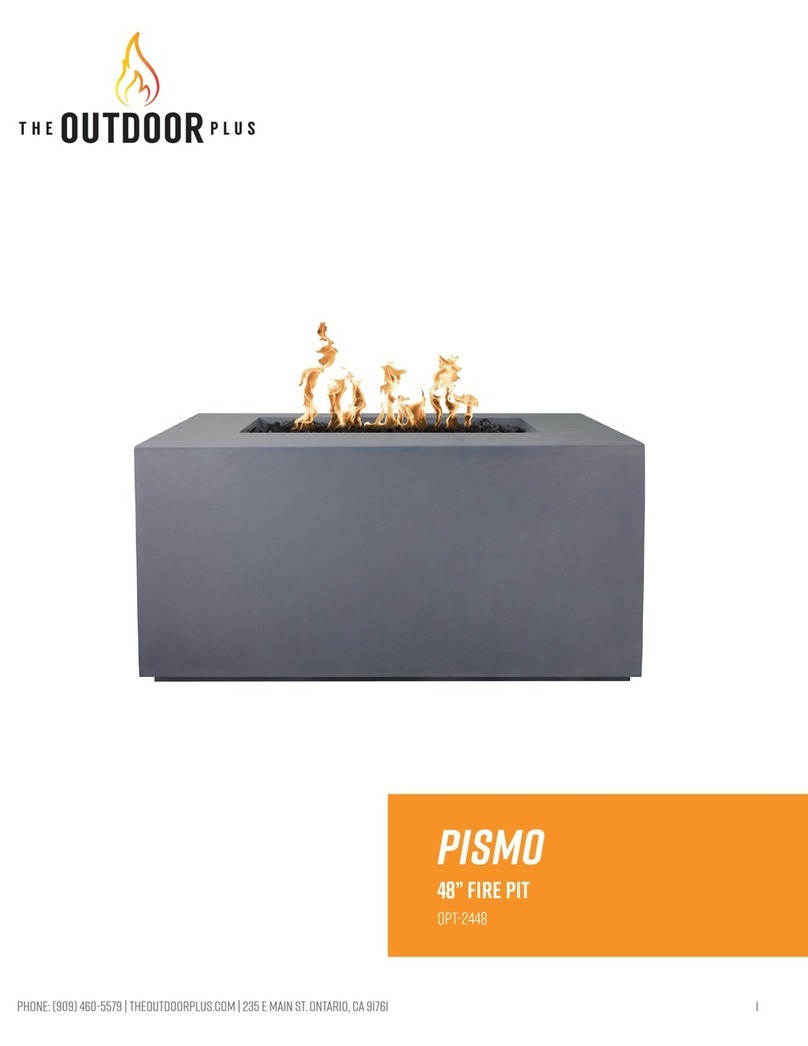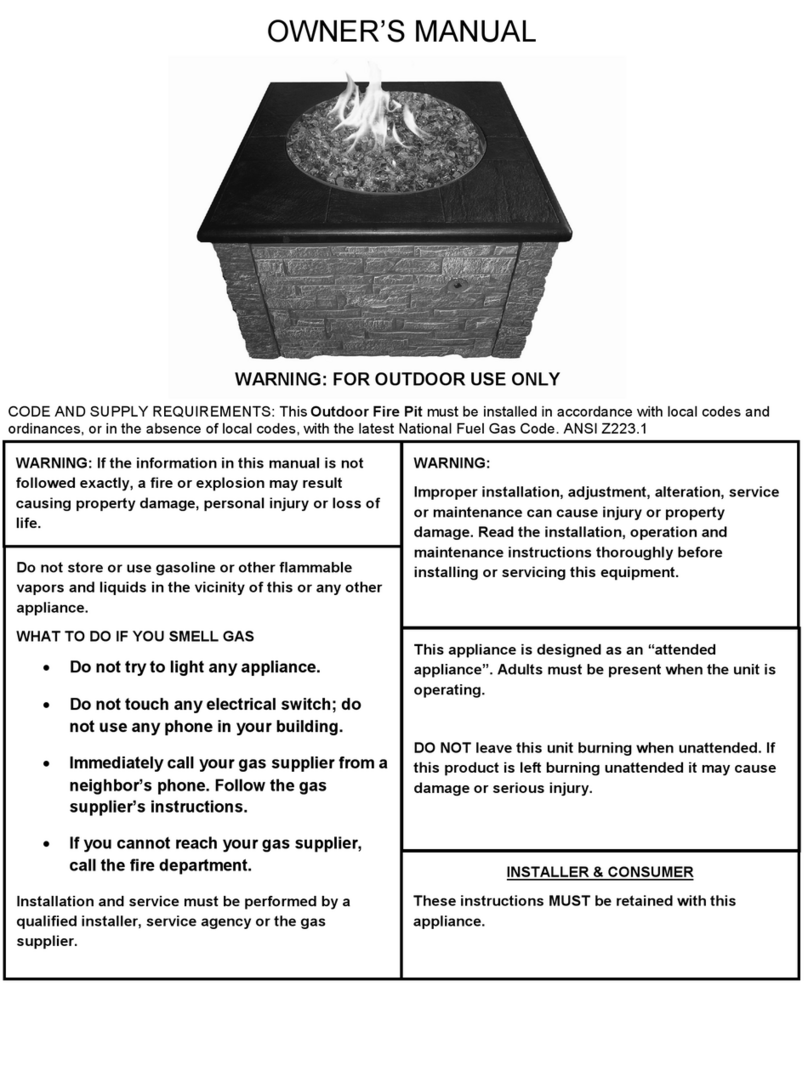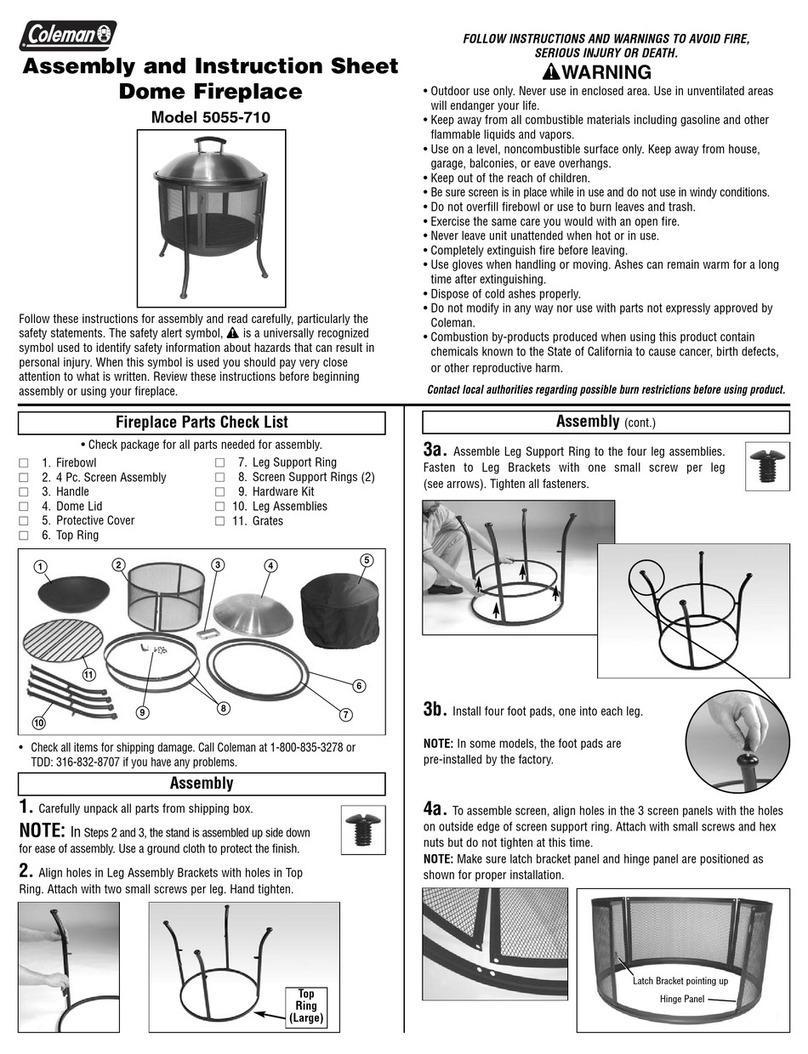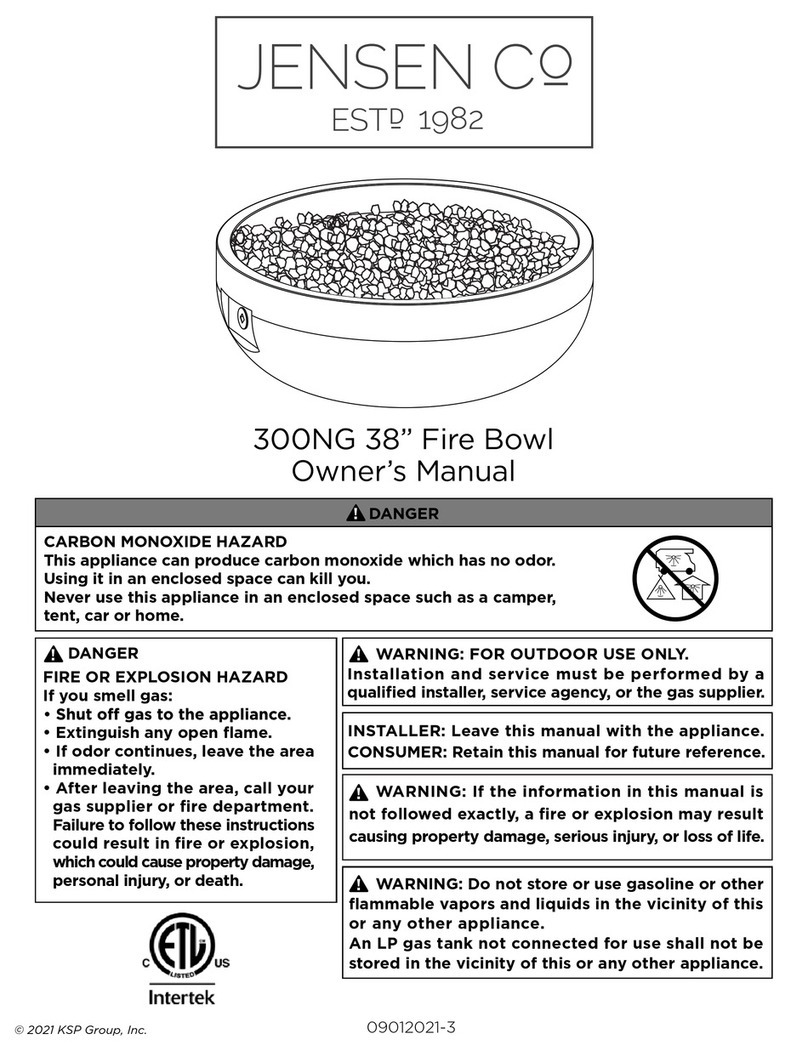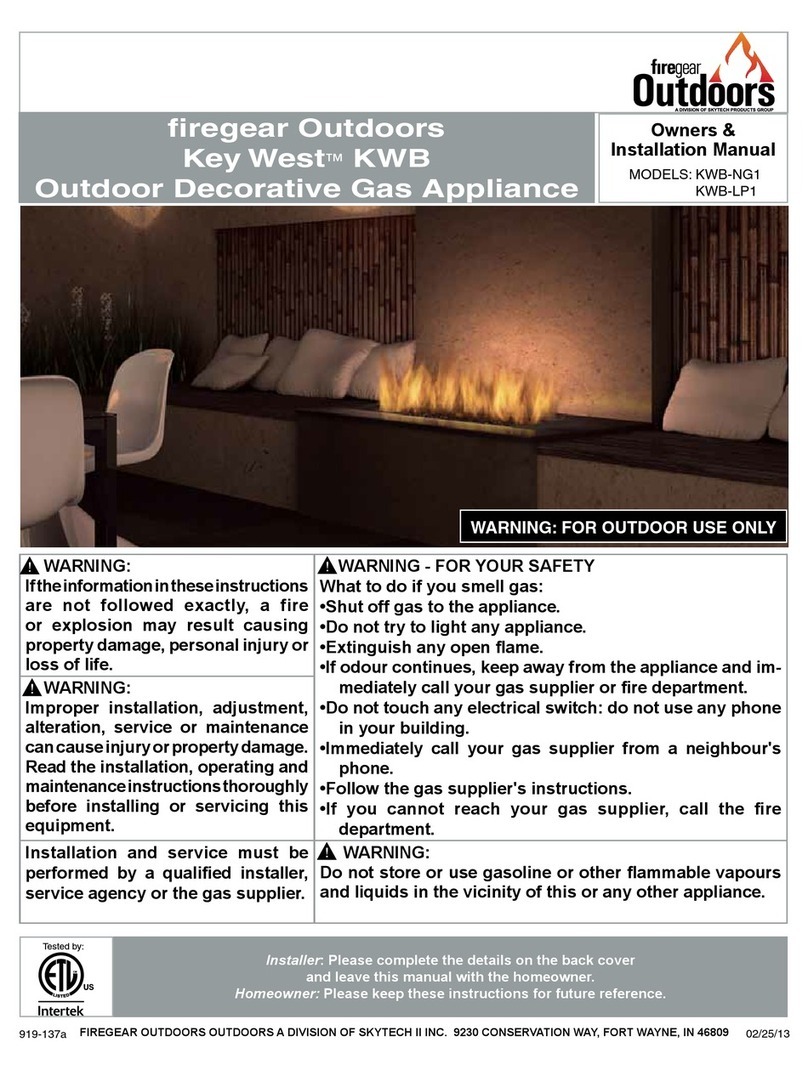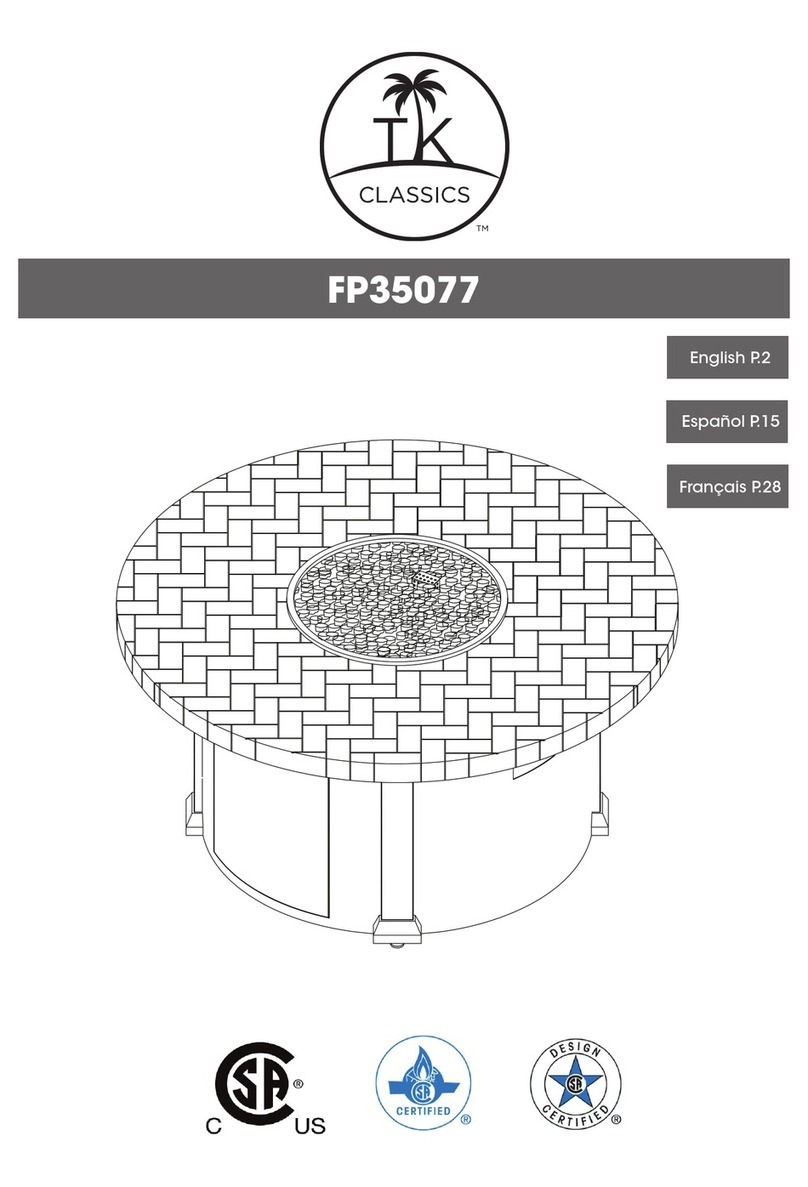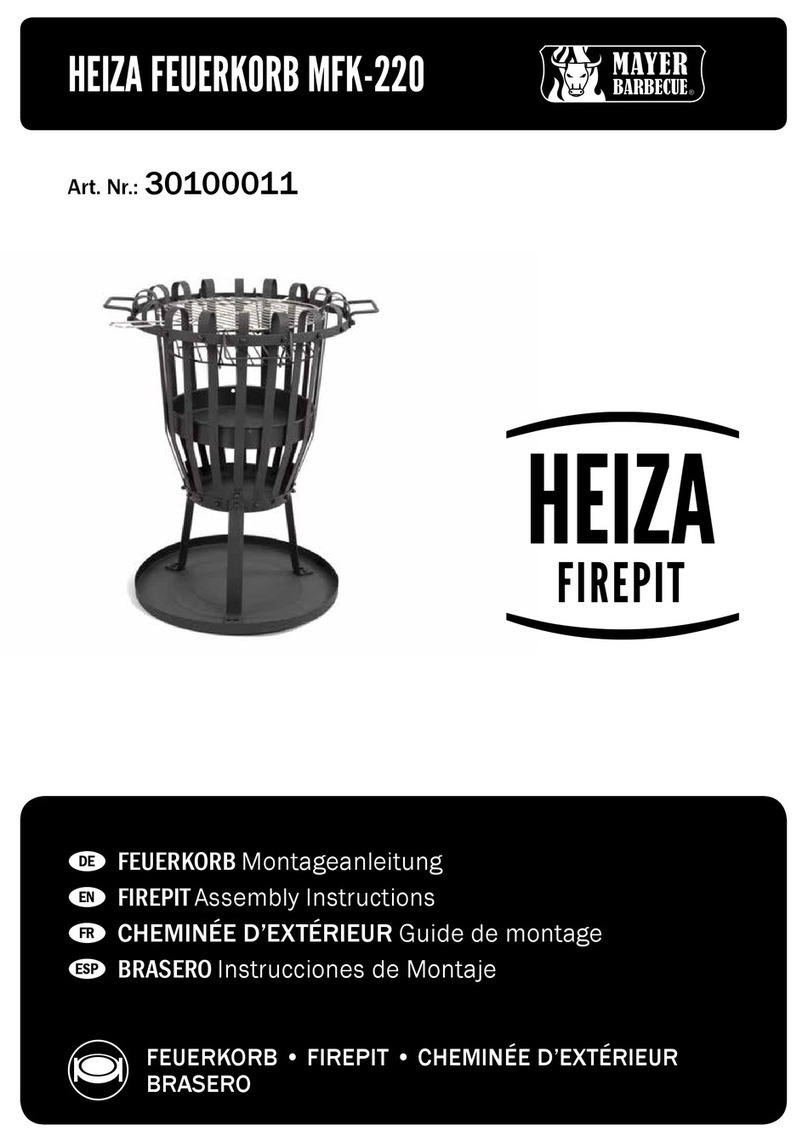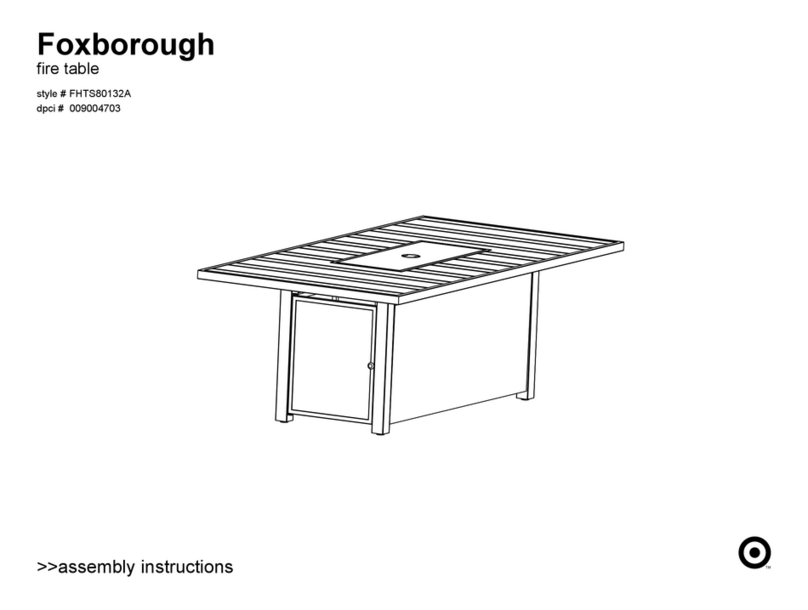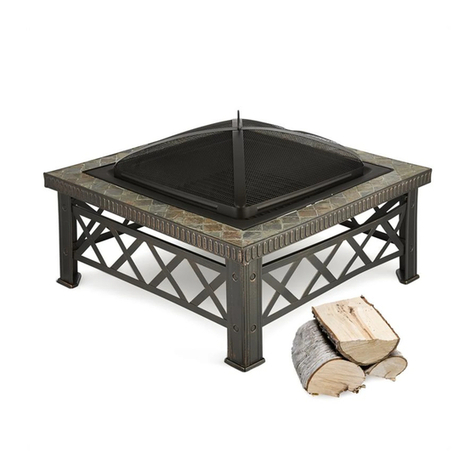
WARNING
Failure to follow the Dangers, Warnings and Cautions contained in this Owner’s Manual may result in serious bodily injury or death, or in
a fire or an explosion causing damage to property. During ignition procedure, one should NEVER get his/her face close to and/or above
the burner in a case an unnoticed flame were to suddenly light up and cause injury.
• Do not use this appliance for cooking.
• Remove the PVC Cover from the appliance before operating the appliance.
• Do not lay the PVC Cover over the appliance until it is turned off and completely cooled down.
• Do not burn any other materials than are supplied with and intended for use in this appliance.
• Do not pour water into appliance.
• Do not use this appliance if any part has been under water.
• Remove the battery when not using the appliance for an extended length of time.
• Do not store a spare or disconnected liquid propane cylinder under or near this appliance.
• After a period of storage, and/or non use, the propane appliance should be checked for gas leaks and burner obstructions before use.
• This propane appliance must be used ONLY in a well ventilated space and shall not be used inside a building or garage.
• Do not operate the propane appliance if there is a gas leak present.
• DO not use this outdoor gas appliance for indoor heating. TOXIC carbon monoxide fumes can accumulate and cause asphyxiation.
• Never use a flame to check for gas leaks.
• Do not locate this appliance under any overhead enclosure. Avoid using near or under overhanging trees and shrubs.
• Combustible materials should never be within 10 feet of the top, back or sides of your propane appliance.
• The propane appliance should never be operated by children. Children must be supervised and kept at a safe distance while the
appliance is in use.
• Children and adults should be alerted to the hazards of high surface temperatures and keep a safe distance to avoid burns or clothing
ignition.
• Do NOT use in windy conditions.
• Pay attention when operating the appliance. It is hot in use and should never be left unattended. Do not attempt to transport it while
in operation.
• Do not attempt to transport this appliance until all parts are cooled or while it is in operation
• Should the fire go out while burning, turn the control knob to "off". Follow the instruction and wait five minutes before attempting
to relight.
• Never use charcoal or any other solid fuel in the appliance. Never hang clothing or other flammable materials on or near the
appliance.
• Never lean over the open appliance or place hands or fingers on the upper portion of an operational unit.
• Do not rest feet on the appliance.
• Do not enlarge valve orifices or burner ports when cleaning the valve or burner.
• Liquid propane gas is not natural gas. This appliance is manufactured and preset for use with propane gas ONLY.
• The conversion or attempted use of natural gas in a liquid propane unit or liquid propane gas in a natural gas unit is dangerous.
• Do not use this appliance on vehicles or boats. Always operate the appliance on flat ground outdoors.
• Keep any electrical supply cord and the fuel supply hose away from any heated surfaces.
• Do not use this appliance unless all parts are in place.
• Any guard or other protective device removed for servicing this appliance must be replaced prior to operating this appliance.
• This appliance is designed for use with a 20 lb. liquid propane gas (LP) tank, not included with this appliance. Never connect your
appliance to an LP gas tank that exceeds this capacity.
• Storage of this outdoor appliance indoors is permissible only if the tank is disconnected and properly stored outdoors.
• Do not store or use gasoline or other flammable vapors and liquids within 25 feet (7.62m) of this or any other appliance.
• Cylinders must be stored outdoors in a well-ventilated area out of the reach of children.
The max. inlet supply pressure: 250psi
•
Children andadults should be alerted tothe hazardsofhighsurface temperaturesandshould stay away toavoid burns orclothingignition.
•Young children should be carefully supervised when they are in the area of the appliance.
•Clothing or other flammable materials should not be hung from the appliance or placed on or near the appliance.
•
Any guard or other protective device removed for servicing the appliance shall be replaced prior to operating the appliance.
•Installation and repair should be done by a qualified service person.
The appliance should be inspected before use and at least annually by a qualified service person.
More frequent cleaning may be required as necessary. It is imperative that the control compartment, burners,
and circulating air passageways of the appliance are kept clean.
•Do not use this appliance if any part has been under water. Immediately call a qualified service technician to
inspect the appliance and to replace any part of the control system and any gas control that has been under water.”
DANGER
